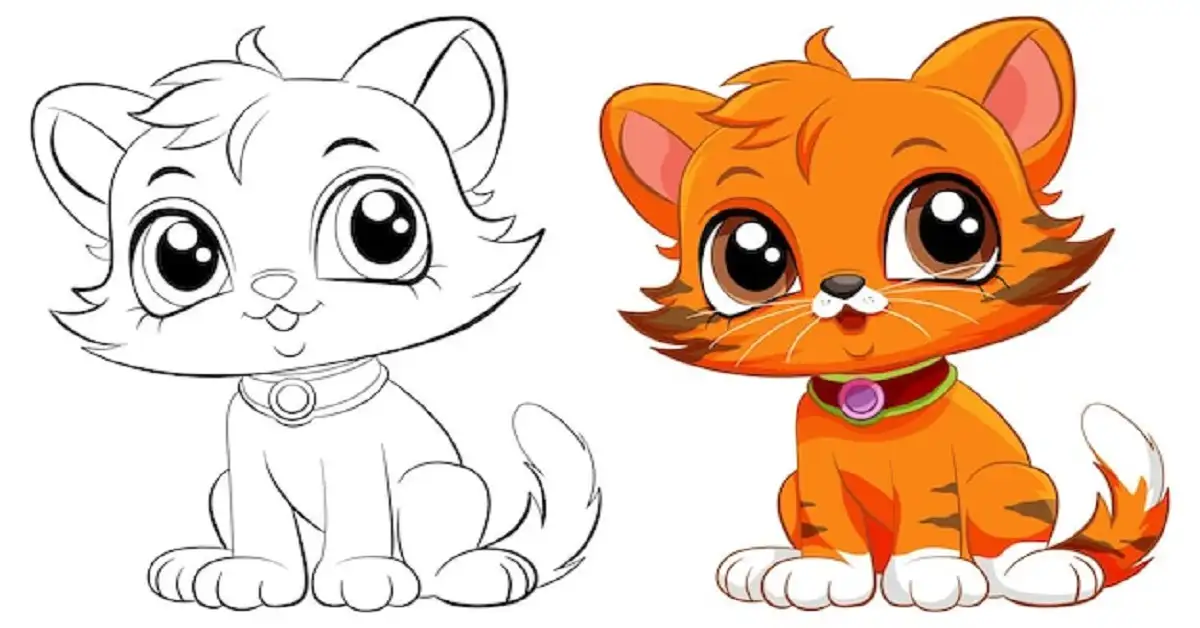Introduction to Drawing and Creativity
Drawing is one of the purest forms of expression. Whether it’s doodling on a notepad or creating an elaborate masterpiece, the act of drawing lets you communicate ideas, emotions, and stories in ways that words simply can’t. It’s like opening a door to your imagination, allowing your creativity to flow freely. But what happens when we introduce a unique concept like “drawinga4z ymtkr8 cat” into the mix? Let’s find out!
What is “Drawinga4z”?
“Drawinga4z” might sound like a code, but it actually represents a playful approach to the art of drawing. It encourages artists to start from the basics (“A” being the first letter of the alphabet) and expand their skills (“Z” being the final letter). It’s about growth and experimentation, moving from a beginner level to a more advanced stage with each piece you create. The “a4” could also refer to a standard paper size, emphasizing the importance of practice, no matter how small or large your canvas may be.
Maine Coon
Maine Coons are large, with tufted ears and bushy tails. Their size and fur texture can be challenging but rewarding to capture.
Bengal Cats
Bengals are noted for their exotic, leopard-like spots. Focus on their muscular build and distinctive patterns when drawing them.
Cats are really cute and are as good friends to us as dogs. If you are interested in cats, in addition to painting cats, you can also customize Lanyards with cat patterns, and add different expressions and poses of different breeds to the design when customizing, which is really very interesting!

The Mysterious World of “Ymtkr8”
Now, here’s where things get intriguing. “Ymtkr8” stands for “You Must Take Risks to Create.” It’s a phrase that pushes artists beyond their comfort zones. Creativity often involves risk – trying new techniques, experimenting with bold colors, or even failing and learning from mistakes. “Ymtkr8” encourages artists to embrace those risks because that’s where true artistic magic happens.
Understanding the “Cat” in Art
Cats have long been a favorite subject in the world of art. From ancient Egyptian carvings to modern-day cartoons, these elegant creatures represent many things: mystery, independence, grace, and even playfulness. When we combine the concepts of “Drawinga4z” and “Ymtkr8” with the symbol of the cat, we open up endless possibilities for creative expression.
Combining “Drawinga4z” and “Ymtkr8” for Creative Expression
The fusion of “Drawinga4z” and “Ymtkr8” allows you to take a structured yet risk-taking approach to your art. It means starting with the basics of cat drawing and then taking creative liberties—playing with form, color, or texture. The goal isn’t to create a perfect replica but to embrace imperfection and let your imagination guide your hand.
The Role of Cats in Artistic Symbolism
In many cultures, cats are symbols of mystery and wisdom. They are also associated with creativity and independence. By drawing cats, you are tapping into this rich symbolic tradition. Whether you depict a realistic feline or a fantastical one, the essence of the cat can bring deeper meaning to your art.
Step-by-Step Guide to Drawing a “Ymtkr8 Cat”
Now, let’s get practical! Here’s how you can create your very own “Ymtkr8 cat”:
- Start with Basic Shapes: Sketch a circle for the head and an oval for the body. These will serve as the foundation for your cat.
- Outline the Features: Add ears, eyes, nose, and a mouth. Don’t worry about making them perfect—this is where “Ymtkr8” comes into play!
- Draw the Body: Extend your lines to form the legs and tail. Feel free to exaggerate proportions or add a whimsical touch.
- Add Details: This is your chance to experiment with textures, patterns, or unique elements like wings or funky fur.
- Play with Colors: Use bold or unexpected colors to make your “Ymtkr8 cat” stand out. Think outside the box!
Materials You’ll Need for This Artistic Project
To create your “Ymtkr8 cat,” you’ll need the following materials:
- Pencils (for sketching)
- Fine-liner pens (for detailing)
- Colored pencils or markers (for coloring)
- Erasers (for making adjustments)
- A4 paper (to fit the “Drawinga4z” concept)
Techniques for Enhancing Your Cat Drawings
Once you’ve sketched your “Ymtkr8 cat,” you can enhance it by:
- Adding Shading: Create depth by shading areas where the light wouldn’t hit.
- Experimenting with Textures: Use cross-hatching or stippling to give the fur texture.
- Playing with Proportions: Try giving your cat oversized eyes or tiny paws for a unique twist.
How “Ymtkr8” Encourages Creative Freedom
The beauty of “Ymtkr8” lies in the freedom it gives you. There are no rules—only suggestions. This concept encourages artists to break away from traditional methods and explore their own unique style. It’s not about creating the perfect cat; it’s about enjoying the process of creation and seeing where your imagination takes you.
Incorporating Different Artistic Styles into “Ymtkr8 Cat”
Why limit yourself to one style? With “Ymtkr8,” you can experiment with:
- Abstract Art: Turn your cat into a collection of shapes and lines.
- Surrealism: Give your cat an otherworldly appearance, perhaps with multiple tails or floating in space.
- Realism: Focus on capturing the fine details of a real cat, but with a creative twist.
Exploring Color and Texture in Your Art
Color can drastically change the mood of your artwork. By using bright, bold colors, you can make your “Ymtkr8 cat” feel playful and energetic. Softer, more muted tones can create a sense of calm and serenity. Don’t be afraid to mix colors or experiment with different mediums like watercolor or pastels.
Personalizing Your Cat Drawings
Every artist brings their own experiences and personality into their work. Consider what makes your version of a cat unique. Is it the way you draw the eyes? The colors you choose? The patterns you incorporate? Personalizing your cat drawings is what will set them apart from everyone else’s.
Why “Drawinga4z Ymtkr8 Cat” is Great for All Skill Levels
One of the best things about this artistic concept is that it’s accessible to everyone. Whether you’re a beginner or an experienced artist, the combination of “Drawinga4z” and “Ymtkr8” offers something valuable. It encourages beginners to experiment while challenging advanced artists to push the boundaries of their creativity.
Conclusion: Embracing Your Artistic Journey
Drawing is not just about making something look good on paper; it’s about expressing yourself and enjoying the process. By embracing the concepts of “Drawinga4z” and “Ymtkr8,” you’re inviting creativity, risk-taking, and fun into your artistic journey. So, pick up that pencil, take a deep breath, and let your imagination run wild!
